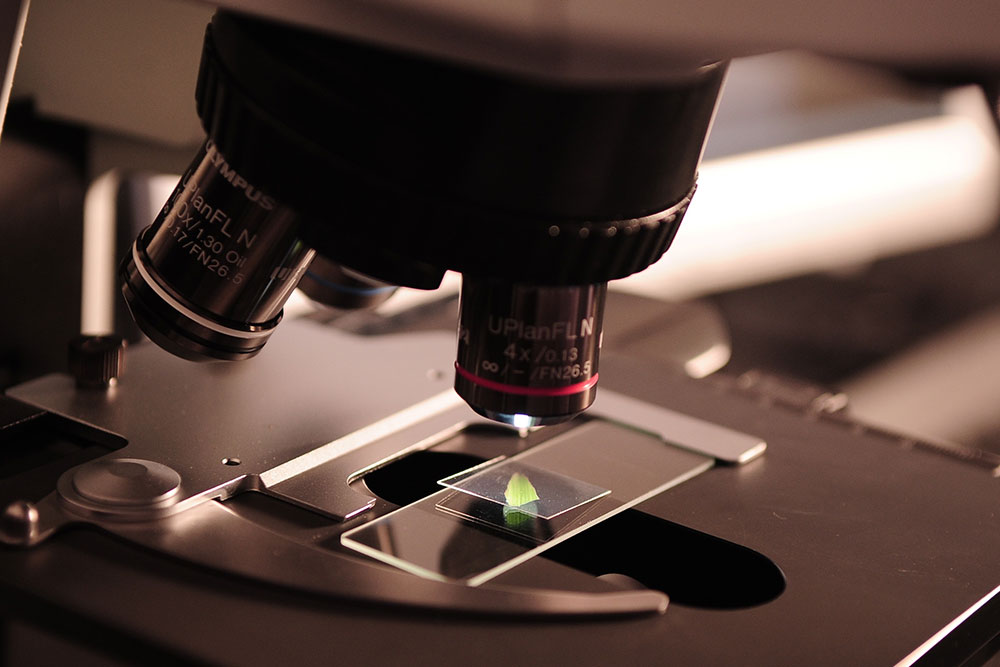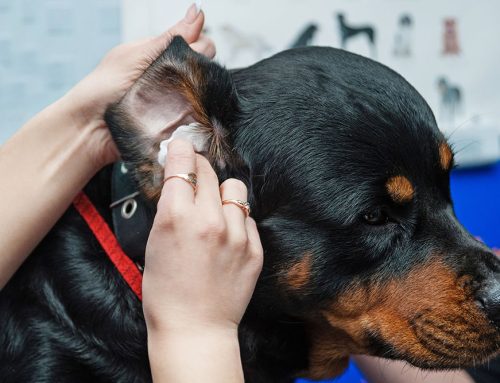What is cytology?
Cytology is the examination of cell shape, arrangement, and function. In veterinary medicine, it is an extremely useful tool to help diagnose the nature of masses and lesions. By evaluating cell morphology, veterinarians can compare a normal cell to that of an abnormal cell and better treat patients. Morris Animal Hospital performs many cytologic examinations and has recently acquired a digital cytology instrument to send samples to our lab faster and further enhance our ability to deliver results to clients.
The first step in cytologic evaluation is the collection of cells from an abnormal spot on a patient. This collection can be done by fine-needle aspirations (FNA) or impressions.After collection, the cells must be prepared on a slide for evaluation. The preparation consists of a staining process that allows differentiationof cells on the slide. New Methylene blue staining process is most commonly used because it effectively dyes most infectious agents, platelets (blood cells involved with clotting), nuclei (the part of the cell that contains chromosomes), and granules of mast cells.
After the preparation of cells on a slide, veterinarians then perform a microscopic evaluation of the slide. In this evaluation, the veterinarian examines cell shape, arrangement, anisokaryosis (variation of nuclear size), mitotic figures, granulation, and nucleation.Each of the cell attributes allow the veterinarian to determine the nature of the cell, and therefore, allow for diagnosis. Once the cell function is diagnosed, then steps can be made for case management for the patient.
A common example for cytologic evaluation on patients iscutaneous mast cell tumors.3 Mast cells are immune cells that are stored in bone marrow and play a role in allergic responses of the body.1 However, mutations can cause mast cells to release in excessive amounts and can cause mast cell tumors as one of the responses of the patient’s body.
When a veterinarian is looking at a sample of a mast cell tumor under a microscope, they will note the cytoplasmic degranulation and dark purple staining of the cell.While the presence of other cell types such as numerous eosinophils (a type of white blood cell) also might assist the veterinarian, degranulation and staining may vary from patients and at times it is best to have lab confirmation for the presence of a mast cell in a sample.Furthermore, mast cell samples are graded by the degree of granularity and nuclear atypia observed upon histologic (samples retrieved from surgical excision of the area of concern) evaluation.This grading system allows for better assignment of case management for each patient.
The image below is an example of what a veterinarian might see on cytologic evaluation. Take note of the granulation from the cytoplasm of the cells and the dark purple staining.

Works cited:
- Pinard.C., Downing.R. Mast Cell Tumors in Dogs. VCA Animal Hospitals.
- Raskin, R.E., Meyer, D.J. Canine and Feline Cytology.First Edition. Saunders. April 11, 2011. 80-81
- Vandis, M, Knoll J.S. Clinical Exposures: Cytologic examination of a cutaneous mast cell tumor in a boxer. March 1, 2007.








Leave A Comment